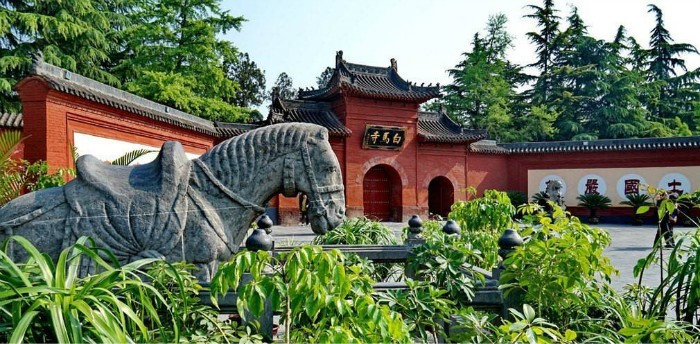White horse temple is a magnificent ancient architecture, has a history of more than 1900 years.
It was commanded by the emperor Ming of the han dynasty. In the year 64 of the eastern Han dynasty, the emperor sent people to study Buddhism in the western world. Three years later, two eminent Indian monks, she muten and Zhu Faran, came with the group. They brought a white horse with buddhist sutras and buddhas on its back. This is the first time Buddhism has appeared in China.

To express his gratitude to the two monks and their white horse, the emperor ordered a monastery to be built the following year and named it the white horse temple. During this time, the two monks were busy translating buddhist sutras in the temple, until they finished the Chinese sutras of the forty-second chapters, which attracted many monks, meaning that the temple became the center of buddhist activity in China. Because of this, the temple is known as the “home of the founders” and “the cradle of Chinese Buddhism”.
White horse temple ancient trees towering, solemn and solemn. Outside the gate, there is a pond with a fence around it. There are lovely fish in the water. Releasing animals is a matter for believers. Cross a stone bridge and you can enter the temple. On the east and west sides of the gate are the tombs of she and zhu falan, one of the six most famous attractions here. There is a tablet pavilion in the east corner. The Chinese characters on the tablet are the work of Chinese calligrapher and abbot shaman wencai, designed during the yuan dynasty (1271-368). Written in his familiar free and easy style, they describe the history of the white horse temple.
The temple of the heavenly king, the hall of the great Buddha, the hall of the great Buddha, the hall of the great Buddha, the hall of the guiding path and the cool terraced fields are all lined up in the temple, just as they were when they were first built.
The hall dates back to the yuan dynasty. In the middle of the hall sat a laughing Buddha, maitreya Buddha. It is said that the Buddha once incarnated as a beggar monk with a wallet containing all the treasures of the world. The shrine, made of wood and carved with more than 50 lifelike dragons, is a typical example of qing dynasty (1644-1911) culture. Maitreya is flanked by four solemn “heavenly Kings”. Each has a different weapon, four of which are clay sculptures cast in the qing dynasty.
Leave a Reply